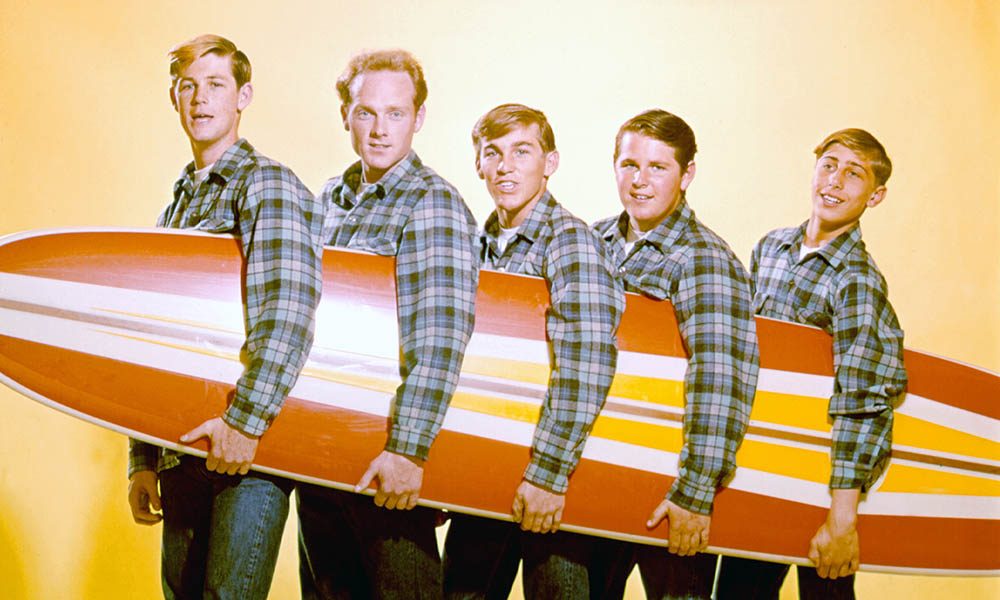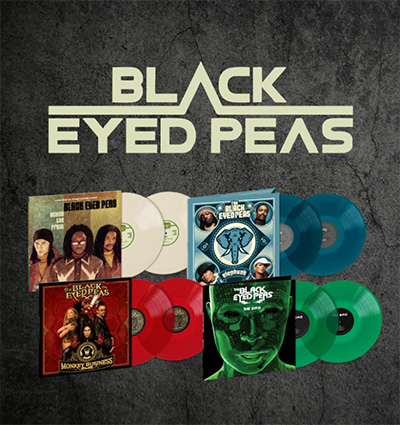If You Like The Four Freshmen… You’ll Love The Beach Boys
The Beach Boys originally emulated the sound of the pre-rock vocal group, The Four Freshman, who famously fused jazz with rock in the 50s.

When you think of jazz-rock fusion, the mind immediately races to the late 60s: Miles Davis’ Bitches Brew, some of the later Jimi Hendrix material, and, eventually, straight-up instrumental “fusion” music of the 70s by Weather Report, Return To Forever and others. But there was a major act that fused jazz with rock much earlier than that, and they did so with vocal tunes – not instrumental jazz – as was the case with The Beach Boys.
Great harmony singing in jazz dates back to its early days, but during the 30s, female trio The Boswell Sisters ramped up interest in the style. Then during the 40s, The Andrews Sisters brought this vocal style to the mainstream, helping to rally the spirit of Americans during World War II and appearing in front of the most popular big bands of the era. Male groups that were an influence on The Four Freshmen included Mel Tormé’s Mel-Tones and Glen Miller’s Modernaires, but during the post-war years, more progressive forms of jazz and smaller combos were the order of the day. Lambert, Hendricks and Ross would create some of the most enduring vocal jazz arrangements of all time during the 50s.
The Beach Boys With The Royal Philharmonic Orchestra can be bought here.
Within this environment, The Four Freshmen emerged out of Butler University in Indiana. They were discovered by one of the most progressive big band leaders of the day, Stan Kenton, then operating out of The Rendezvous Ballroom on the beach in Balboa, California. Signed to Kenton’s label at the time (Capitol Records) in 1950, a stream of albums and hit singles were released, including “It’s A Blue World,” “Graduation Day” and “Their Hearts Were Full Of Spring” (the latter two later covered by The Beach Boys).
During the 50s, The Four Freshmen’s line-up remained pretty consistent, with Bob Flanigan (the beautiful high harmony voice) accompanied by Don Barbour and Ross Barbour for the entire decade. The fourth voice was provided by Hal Kratzsch, who was then replaced by Ken Errair and, finally, Ken Albers, who remained with the group into the 70s. Bill Comstock replaced Don Barbour at the dawn of the 60s, a decade in which The Four Freshmen continued to make fine albums.
During the late 50s, a young Brian Wilson began scouting around Los Angeles for vocal groups to join – albeit R&B vocal groups such as The Jaguars, who he auditioned for. In the end, he chose instead to start his own vocal group with his two brothers, Dennis and Carl, and his cousin Mike Love, with whom he would stay up late at night, copying the early R&B sound that they picked up on their transistor radios.
Brian’s youngest brother, Carl, actually had a lot to do with turning on Brian to R&B, because the eldest Wilson brother had been weaned on George Gershwin’s “Rhapsody In Blue,” and had picked up on The Four Freshman from his mother Audree’s record collection. Brian gravitated especially to a number called “Day By Day,” the leadoff cut on the Freshmen Favorites album, which Audree had lying around the house.
One of the earliest surviving tapes that Brian Wilson, Mike Love, Dennis Wilson and Carl Wilson made, in fact, was akin to their later Beach Boys Party! album, sort of a sing-a-long session at their house, from 1960. Perhaps the most interesting moment occurs when Mike’s sister, Maureen Love, sings lead on a number for which you can first hear Brian Wilson arranging full, lush vocal backgrounds to back her, in the style of The Four Freshmen.
A year later, with their friend Al Jardine singing and playing stand-up bass, Brian, Mike, Carl and Dennis went into the Pacific Jazz/World Pacific studio on 3rd Street in LA – the legendary recording home of Chet Baker, Gerry Mulligan and a number of West Coast Jazz legends. There, they recorded their first single, “Surfin” backed with “Luau” for a single on Candix Records. The disc was notable because of its strong vocal sound, as the instrumentation was limited to that bass, an acoustic guitar played by Carl, and Brian putting his jacket over a trash can in order to play percussion.
One of their earliest gigs wound up being at the aforementioned Rendezvous Ballroom in Balboa, in support of surf guitarist Dick Dale & His Del-Tones. At this early show, The Beach Boys appeared huddled around a microphone, primarily a vocal group, sans instruments. This first Beach Boys record became a No.2 hit on the local rock’n’roll station KFWB at the end of 1961, alongside Dale’s “Let’s Go Trippin” and The Belairs’ “Mr. Moto,” as part of a new music trend associated with the emergent pastime of surfing… a favorite youth activity inherent to Balboa itself.
The Beach Boys were off and running, soon recording some very hot rock’n’roll band demos with their own instrumental backing, akin to The Del-Tones and Belairs. These recordings, from Western Studios on Sunset Boulevard, would lead to their first national hit, “Surfin’ Safari.” The strong surf instrumental backing perfectly complimented their equally strong vocal sound.
This debut disc on Capitol quickly led to The Beach Boys becoming the most popular rock’n’roll group in America, prior to the breakthrough of The Beatles on Capitol in early 1964. Throughout The Beach Boys’ string of early hits – “Surfin’ USA,” “Surfer Girl,” “Fun, Fun, Fun,” “Don’t Worry Baby” and “I Get Around” – group leader Brian Wilson would be the primary interview subject, explaining that the secret to their success was their combination of Chuck Berry’s R&B guitar sound with vocal arrangements inspired by The Four Freshmen.
By 1965, the entire second side of Beach Boys Today! featured both instrumental and vocal arrangements closer to jazz than rock, and with Pet Sounds, that type of jazz influence would mix with classical, in a manner where a Beach Boys album could stand alongside the soundtrack arrangements of Elmer Bernstein, John Barry, Quincy Jones and Henry Mancini… all with Wilson’s expansive version of Four Freshmen vocal arrangements on top.
The Beach Boys With The Royal Philharmonic Orchestra can be bought here.












